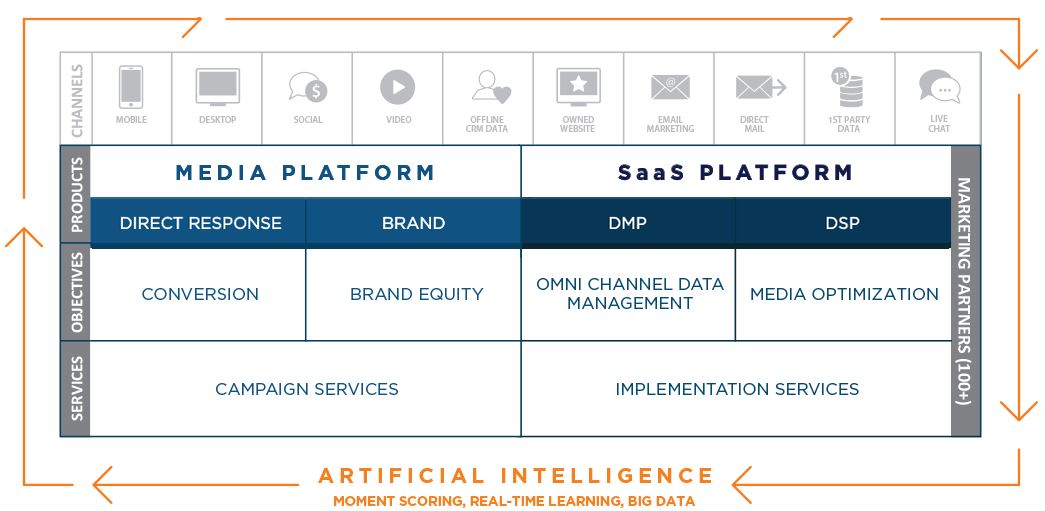The Modern Marketing Department — Managing from Acquisition to Churn

Lately, I’ve been thinking a lot about the “Modern Marketing Department”, especially in our exciting world of fast-exploding marketing technologies and the industry-wide conversion to services sales (versus license sales).
Marketing is changing faster than any profession today; and many marketing teams are adding new capabilities, such as marketing automation; content marketing; and consumption programs to already existing marketing team structures that tend to be *functionally aligned* (i.e. PR; E-mail; Display; Newsletter; Media; Web) as opposed to being *outcome aligned*, which is defined as quota-based performance for Unknown Visitors; Known Prospects; Prospect to MAQL Conversion; MAQL to Win Conversion; and Churn & Customer Lifetime Value (CLV).
For too long as an industry we have trained marketers to be highly specialized in narrow areas, and unfortunately this tactical orientation doesn’t drive the type of accountable business outcomes which are necessary to create a robust Revenue Marketing Department.
This creates two problems:
- Organizational Rigidity: There’s nothing more damaging to a business than having groups of employees clinging to tasks that once made sense, but now need to be abandoned. Because of the anxiety that many employees experience around job change and skills re-training, the result is that internal opposition to change will virtually guarantee that the organization will respond too slowly to marketplace changes — which is particularly problematic in for marketing which needs to be the pointy end of the spear on marketplace adaptability.
- Employee Obsolescence: As an employee, it can be tempting to sit back and “do my job” (with the attendant other side of the coin of “not my job”). My advice to everyone on my team is to think of yourself not as an employee, but as a professional. Imagine that just like Doctors, Lawyers, and Scientists; marketers also had a TLA after their last name … such as DRM (Doctor of Revenue Marketing). I once had a teammate tell me … after I encouraged her to read John Caples‘ How to Make Your Advertising Make Money and Tested Advertising Methods … that she couldn’t possibly find time in her busy day to read a book. I was quiet for a moment, and then I gently said: “I wasn’t suggesting that you read this during the day, I would recommend you read it at home at night.” She looked at me a bit dumbfounded and replied “I never read about marketing outside of work!” Bottom line — she was doing marketing as a “job”; but her real passion was music … it was music on which she spent her personal time. My advice was that she pursue her passion, because if you don’t want to read about what you do at night — if you don’t have the passion around your profession to invest in it like any other professional has to invest (such as how lawyers and doctors must go to courses to keep their professional accreditation) — then you’re in the wrong profession. Since then, this teammate moved into the music industry, and I understand she’s much happier 🙂
THE MODERN MARKETING DEPARTMENT
So, what does an outcome-aligned Marketing Department look like? My current POV is that is is aligned around 4 key outcome buckets, with 3 end-to-end supporting functions.
4 Key Outcome Buckets — all of these carry metrics and can carry quotas:
- Acquisition: Converting Unknown/Anonymous Visitors into Known/Prospects;
- Prospect Nurture: Converting Known/Prospects into Marketing Automation Qualified Leads (MAQLs);
- Lead Nurture: Converting MAQLs into Wins (via a Sales Funnel of SAL > SQL > Win); and
- Customer Nurture: Keeping customers and creating fans to generate low Churn and high Customer Lifetime Value.
3 End-to-End Supporting Functions:
- BI/Reporting: Testing and refining the Marketing Automation Engine with ROMI Analysis: Marketers need to have a mastery of all data-driven marketing techniques with an ability to manipulate, analyze, and draw insights from marketing data using a variety of data visualization tools.
- Compliance & Controls: Centralization of repetitive executional functions drives marketer productivity and builds in “Compliance by Design”.
- Professional Development: Marketers must invest in their knowledge within a professional educational framework — lifelong learning and curiosity are the hallmarks of great marketers!
Here’s a little more on the 4 outcome buckets, which we’re going to build out over successive posts. One thing I’m super excited about these days is the growing potential to manage this cycle entirely with social and paid media — allowing us to potentially sidestep the rapidly diminishing marketing channel of e-mail altogether:
ACQUISITION
Converting Unknown/Anonymous Visitors into Known/Prospects
- Social Engagement (Platform: Sprinklr): Listening to category and brand mentions across facebook, Twitter, Instagram and other social platforms; Engaging with posters to escalate issues to support or drive product interest to gated content.
- Acquisition Marketing (Platforms: RevJet and Rocket Fuel): Leveraging the latest AdTech capabilities of search; social advertising; programmatic ad buying; re-targeting; sponsored content; video; and mobile marketing through all the latest ad platforms. Here’s a really nice way of visualizing Programmatic Ad Buying from Rocket Fuel:
PROSPECT NURTURE
Converting Known/Prospects into Marketing Automation Qualified Leads (MAQLs)
- Content Marketing (Platforms: Kapost and Marketo): Engage and inspire others through storytelling; understand the key components of great stories; and know how to craft them into engaging content that is so compelling people would pay to read it.
- Customer Experience: Obsess over customers by living and breathing the customer experience and understanding the end-to-end customer experience journey through the buying and usage cycle.
LEAD NURTURE
Converting MAQLs into Wins (via a Sales Funnel of SAL > SQL > Win)
- Experience Selling: Taking a prospect from “interest” to “wow, that looks fantastic — I want to buy it” is a process of helping the prospect understand the *experience* of using the product through demos; videos; proof-of-concepts; testimonials; events; Webcasts; and other experiential learning tools.
- Social Selling: (Platform: LinkedIn) Using LinkedIn Sales Navigator with a program on on-boarding and on-going coaching and training (plus resources to encourage posts and SME content) can be one of the most powerful ways to network throughout an organization — if done correctly!
CUSTOMER NURTURE
Keeping customers and creating fans to generate low Churn and high Customer Lifetime Value
- Creating Fans: (Platform: Sprinklr): This is where the marketing system comes full circle, back to Social Engagement … except that now we’re listening to customer brand mentions across facebook, Twitter, Instagram and other social platforms and engaging with those customers to escalate issues to support or drive on-going product advice and news to drive fandom for your brand.
- Upsell and Cross–sell: What else can you sell your customer? What other services support the brand promise of the initial service sale? Where are new services being added to the category that you can offer as well? This is your key source of long-term revenue and value for the brand.

